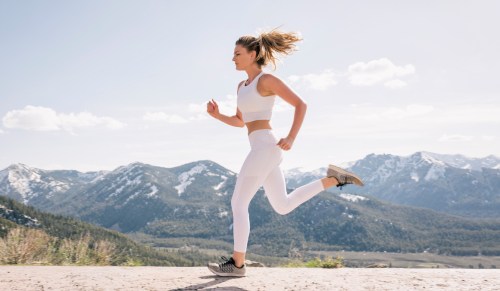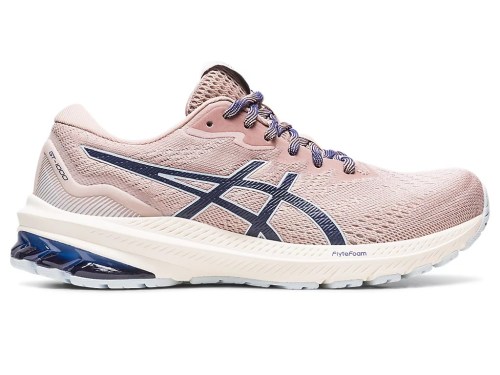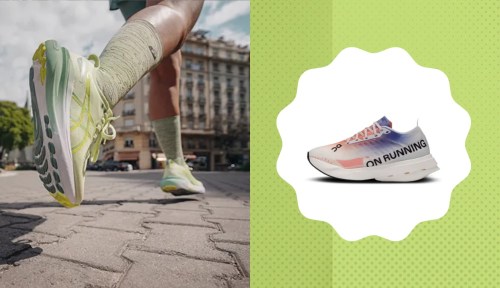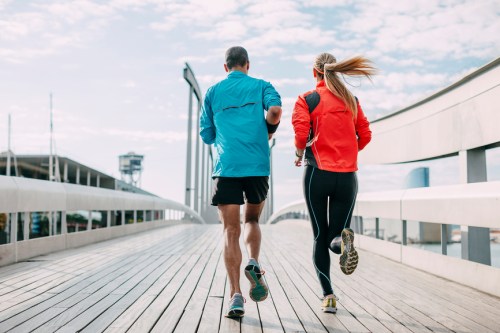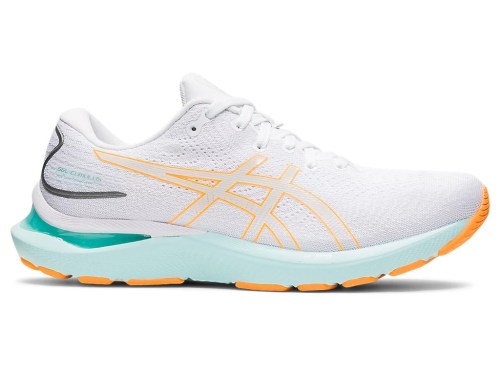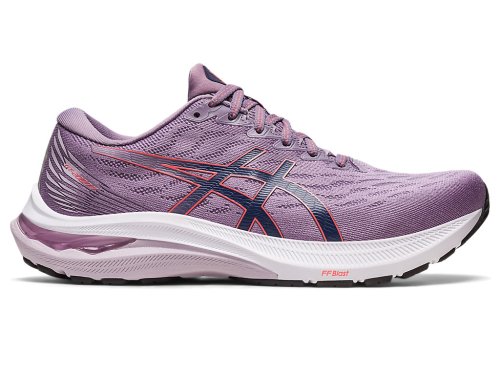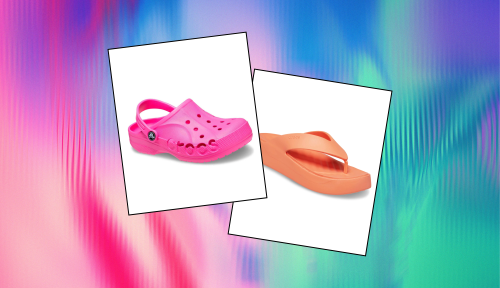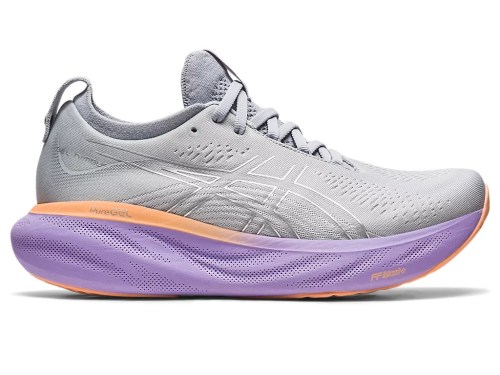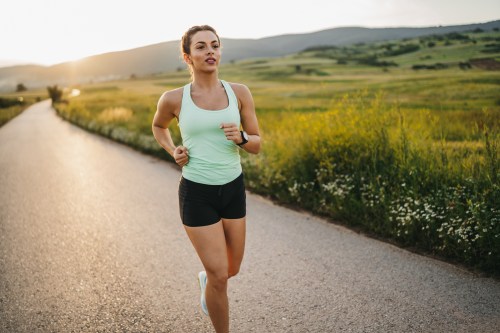Our editors independently select these products. Making a purchase through our links may earn Well+Good a commission
Finding the perfect pair of sneakers is similar to finding a soulmate. You may have to go through a lot of pain and discomfort along the way, but when it’s right, you’ll know immediately. And while the sneaker market (similar to the online dating pool) has no shortage of options, there’s one pair that a podiatrist recommends time and time again as being a match for everyone.
Experts in This Article
Chicago-based podiatric surgeon at Michigan Avenue Podiatry
board-certified podiatric surgeon and founder of Gotham Footcare
The best Asics shoes, at a glance:
- Best overall: Asics Gel-Nimbus 25, $160
- Best value: Asics GT-1000, $70
- Best for flat feet: Asics Gel-Kayano 29, $160
- Best for wide feet: Asics Gel-Cumulus 24, $80
- Best for overpronation: Asics GT-2000, $140
- Best for plantar fasciitis and long-distance running: Asics Gel-Nimbus, $160
The Asics Gel Kayano has come up repeatedly as being the best foot-stabilizing shoe money can buy, and Miguel Cunha, DPM, founder of Gotham Foot Care in New York City, has touted its benefits for walking, running, and every activity in between. It’s designed for people who need a bit more stability in their movement (aka people with flat feet, whose feet “overpronate” or roll inward when they run), and has next-gen technology that provides both comfort and support.
“Runners will find this sneaker to have superior comfort that enhances the foot’s natural gait from heel strike to toe-off,” says Dr. Cunha. “This shoe is designed with rearfoot and forefoot gel technology that provides superior cushioning and shock absorption. This shoe incorporates exceptional durability and lightweight materials with a medial extension from the midsole to the heel for increased motion control. Last but not least, these sneakers include an additional 3 millimeters of midsole height to decrease tension placed on the plantar fascia and Achilles tendon.”
Are Asics recommended by podiatrists?
The short answer is yes. “Asics shoes are often recommended by podiatrists because they focus on delivering supportive and well-cushioned footwear suitable for a variety of foot types and running styles,” says Asim Qureshi, DPM, a Chicago-based podiatric surgeon at Michigan Avenue Podiatry. Since everyone’s foot is different, Dr. Qureshi recommends consulting with a podiatrist for personalized advice on picking the best Asics shoe for you.
What differentiates Asics running shoes compared to others?
“Asics running shoes are distinguished by their GEL cushioning system, which offers exceptional shock absorption and comfort,” Dr. Qureshi explains. Additionally, the brand provides a variety of shoe models to accommodate different foot types, running styles, and support needs.
No matter what type of runner (or pronator) you are, according to Dr. Cunha and Dr. Qureshi, Asics has got you covered.
Gel-Nimbus 25 — $160.00
Sizes available: 5-13, in half sizes
There are far and few shoes that have it all, but Asics Gel-Nimbus is high up on podiatrists’ list. “This shoe excels in providing cushioning, support, and durability for various types of runners and paces, making it a popular choice across multiple disciplines,” says Dr. Qureshi. The shoe feels like you’re running on clouds thanks to the foam- and gel-infused cushioning. This means softer landings and better shock absorption, so sprints, jogs, and distance runs are now smoother. Runners can also enjoy reflective details—which were added to give runners visibility while jogging at night. Lightweight, cushioned, and durable, Gel-Nimbus 25 is the best overall pick.
Colors: 13
Heel drop: 8mm
Weight: 9.2oz
Pros
- Cushioned and gel cushioning
- Has reflective details
- Absorbs shock
- Breathable
Cons
- Expensive
GT-1000 — $70.00
Sizes available: 5-12, in half sizes
“Asics GT-1000 offers dependable support and decent cushioning at an affordable price,” says Dr. Qureshi. This midsole is engineered with the brand’s foam and gel cushioning, ensuring softer and smoother landings, as well as thin, lightweight trusses, aka Litetruss, that reduce overpronation and offers up a more lightweight stride. Lightweight, supportive, and wearable by people with neutral arches and flat feet, the GT-1000 is a shoe that is worth the dollar bills.
Colors: mineral beige
Heel drop: 8mm
Weight: 7.9oz
Pros
- Comfortable
- Lightweight
- Breathable
- Good value
Cons
- May run small for some
- Available in one color only
Gel-Kayano 29 — $160.00
Sizes available: 5-13, in half sizes
As a lifelong Gel Kayano wearer (and, according to the people at the local running store, an overpronator), I can attest to the fact that these sneaks are the real deal. I was logging miles in the wrong shoes for years, and couldn’t figure out why my hips and knees were constantly in pain. After a few runs in my Kayanos, though, the problems went away. I’ve owned at least a dozen pairs over the last decade, and since the brand comes out with new color combos every season, have yet to get bored of selecting my shades. Dr. Qureshi recommends this pair to people with flat feet because it delivers excellent arch support and stability, enhancing comfort and running efficiency for those with flat feet.
Colors: 20
Heel drop: 10mm
Weight: 9.5oz
Pros
- Ideal for people with flat feet
- Offers stability
- Maximum cushioning
- Available in a variety of colors
Cons
- Expensive
Gel-Cumulus 24 — $80.00
Sizes available: 5-13, in half sizes
If you have wide feet, Dr. Qureshi doesn’t want you to skip on the Asics GEL-Cumulus. They’re “designed to provide comfort and support for runners with wide feet, featuring a roomy toe box,” he says. Because of the wider toe box, the shoe offers added stability, especially on uneven terrain and pavement. Made of a lightweight mesh, this shoe is like a ventilated unit, cooling your toes and feet regardless of how hot or sweaty your runs get. Wherever your runs take you next, know the Gel-Cumulus 24 has got your feet covered (literally).
Colors: 17
Heel drop: 8mm
Weight: 8.8oz
Pros
- Wide toe box
- Offers stability
- Good value
- Available in a variety of colors
Cons
- Cushioning may be too mushy for some
GTS-2000 — $140.00
Sizes available: 5-13, in half sizes
Overpronation can be characterized as a style of foot movement where the foot lands on the outside of the heel, then rolls inwards. This excessive movement can put pressure on the ankles and foot, making it uncomfortable to walk and run in the long run. Thankfully, the GTS-2000 is here to save the day. “This shoe incorporates stability features, such as the Dynamic DuoMax Support System to help manage overpronation and improve stride efficiency,” says Dr. Qureshi. Additionally, the shoe’s midsole is engineered with a proprietary foam that absorbs shock and is lighter on your knees and joints. Whether you’re running one mile or ten, Asics GTS-2000 can help you go the distance.
Colors: 9
Heel drop: 8mm
Weight: 8.3oz
Pros
- Manages overpronation
- Foam midsole absorbs shock
- Has mesh upper
Cons
- Expensive
Asics, Gel-Nimbus 25 — $160.00
Sizes available: 5-13, in half sizes
If you’ve got plantar fasciitis but want to go the distance on your runs, there’s another pair of Asics kicks that Dr. Qureshi regularly recommends: The Asics Gel Nimbus. “With generous cushioning and asupportive heel counter, this model may help alleviate discomfort related to plantar fasciitis,” he says. The shoe also boasts an adaptive fit with a stretchy tongue and soft collar—which prevents irritation no matter how many miles you’re clocking in. Available in 13 colors, from purple to grey, there’s a shoe that meets everyone’s color preference.
Colors: 13
Heel drop: 8mm
Weight: 9.2oz
Pros
- Cushioned and gel cushioning
- Has reflective details
- Absorbs shock
- Breathable
Cons
- Expensive
Sign Up for Our Daily Newsletter
Get all the latest in wellness, trends, food, fitness, beauty, and more delivered right to your inbox.
Got it, you've been added to our email list.
